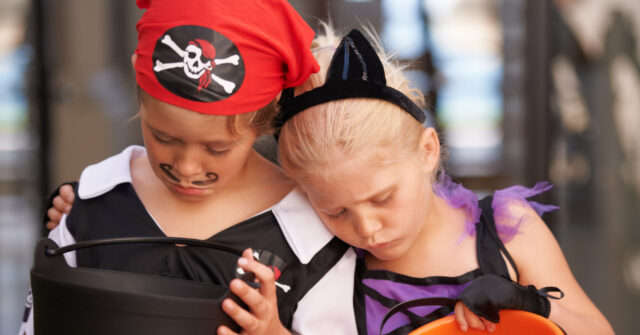The rising costs of Halloween essentials, particularly candy, have become a significant concern for American consumers under the Biden-Harris administration, reflecting the broader impacts of current inflationary trends. Since President Biden took office, the consumer price index for candy and chewing gum has surged by approximately 22 percent. This increase starkly contrasts with the cumulative inflation rates recorded during the presidencies of both Donald Trump and Barack Obama, highlighting a concerning trend in the cost of holiday festivities. As the nation approaches Halloween, the escalating prices serve as a reminder of the broader economic challenges facing many families as they prepare for seasonal celebrations.
Consumer sentiments regarding Halloween have been notably affected by these rising costs. A survey conducted by the Halloween & Costume Association indicates that over half of Americans, specifically 53 percent, anticipate their Halloween plans will be influenced by inflation and escalating costs. Many families are increasingly cautious about expenditures, particularly in choosing costumes, which have become a financial consideration rather than just a festive choice. The survey findings suggest that inflation is not merely an economic statistic but a tangible factor shaping holiday enjoyment and planning.
The fear of increased expenses has prompted a shift in consumer behavior, with many Americans planning to spend less on Halloween this year compared to previous years. According to the Halloween & Costume Association, 25 percent of individuals have expressed intentions to cut back on their Halloween spending due to the financial strain. This contraction in spending could dampen the festive atmosphere typically associated with the holiday, as families reconsider their usual expenditures on Halloween treats and activities, emphasizing how pervasive financial insecurity is in today’s economic environment.
The financial outlook for the upcoming Halloween season, as estimated by the National Retail Federation, reveals a downward trend in consumer spending. This year, total expenditures on Halloween goods—including costumes, candy, and decorations—are projected at $11.6 billion, a decline from the previous year’s estimate of $12.2 billion. This drop not only signifies individual cutbacks but also reflects a broader economic context where households are tightening their budgets amid rising prices and economic uncertainty, further exacerbating the challenges faced by retailers and businesses that rely heavily on holiday sales.
The implications of these spending trends extend beyond individual households, affecting local economies and the retail sector as a whole. Halloween is a pivotal season for many businesses, and diminished consumer spending can lead to reduced sales forecasts and potential hardships for retailers who depend on the holiday to boost their annual revenues. As families opt for cheaper alternatives or forgo certain traditions altogether, businesses may struggle to recover from the financial repercussions of the pandemic, especially if these spending habits persist into other holiday seasons.
In summary, the current inflationary pressures under the Biden-Harris administration have significantly influenced consumer behavior concerning Halloween spending, causing many families to reassess their holiday plans and expenditures. The stark increase in candy prices, coupled with a general trend of reduced holiday spending, indicates a broader anxiety about financial security that surpasses Halloween festivities. As Americans look to celebrate, this shift in consumer sentiment and financial habits highlights the continued impact of inflation and economic pressures on traditional celebrations, suggesting that the ramifications may extend far beyond the Halloween season itself.

